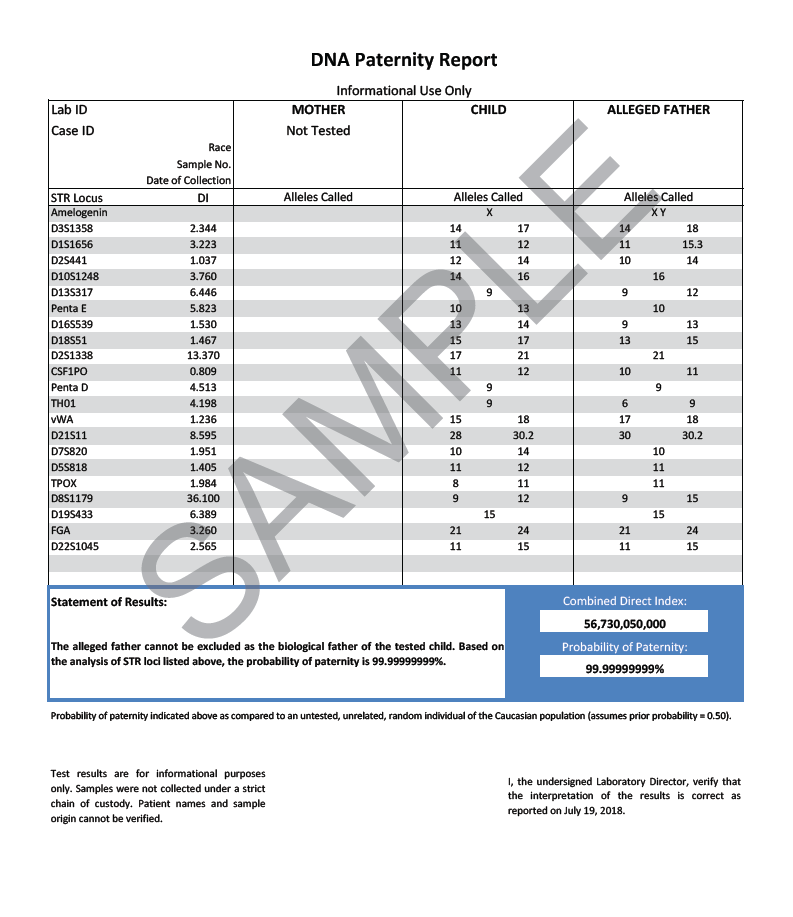Collecting the right DNA sample is key to ensuring accurate paternity testing and other relationship DNA tests. Buccal swabs are the most reliable, cost-effective, and fastest option, delivering results in 2-3 business days with minimal risk of contamination. Alternative forensic samples, like hair, blood, or clothing, take longer and may not always yield complete DNA test results.
Can DNA Prove Cheating?
Think DNA can prove cheating? It can. With advanced infidelity testing like semen detection, you can get the answers you need quickly and accurately. Whether it’s identifying bodily fluids or matching DNA evidence, these tests provide clarity in tough situations. At Validity Genetics, we deliver fast, private results in just 5-7 business days. Ready for the truth? Let us help.
Infidelity DNA Test Results - How to Understand What They Mean
Understanding infidelity DNA test results is key to interpreting findings from semen or saliva detection and DNA comparison tests. This guide explains how results confirm or rule out the presence of bodily fluids and foreign DNA, providing clarity in infidelity testing. Whether identifying unknown DNA or verifying a match, these insights help uncover the truth with scientific accuracy.
What You Need to Know About Grandparent DNA Tests
Need answers about family connections? Grandparent DNA tests are a fast and accurate way to confirm biological relationships when parents aren’t available for testing. With results in just 2-3 business days, they’re perfect for legal cases, immigration, or family research. Discover why Validity Genetics is trusted for reliable, confidential, and court-admissible DNA testing!
Semen Detection Test: What Does It Really Detect?
Curious about how a semen detection test works? It’s a powerful tool for uncovering evidence of infidelity with forensic accuracy. Using semenogelin detection—unique to human semen—it can find even trace amounts on clothing or bedding. At Validity Genetics, we deliver accurate, private results to help you get the answers you need. Learn more about the science behind semen detection today!
How Accurate Are Sibling DNA Tests?
Curious about sibling DNA test accuracy? Find out how shared DNA percentages reveal full or half-sibling relationships, what affects results, and how to interpret them. Whether it’s for family clarity or legal needs, Validity Genetics has you covered with advanced testing and reliable answers. Dive into the details and uncover the truth about sibling connections!
10 Signs You May Need an Infidelity DNA Test - Catching a Cheater
Discover the top 10 signs you may need an infidelity DNA test, from unexplained stains to emotional distance and suspicious behaviors. Learn how advanced DNA testing, including semen detection, can provide the clarity and evidence you need. Explore how Validity Genetics delivers accurate, confidential, and fast results to uncover the truth in sensitive situations.
Paternity Test Results: Explained with Examples
Explore example paternity test results in this detailed guide. Understand how to read home paternity test reports, including Combined Parentage Index (CPI) and probability of paternity percentages. See examples of positive and negative results and learn how they confirm or exclude biological relationships. Trust Validity Genetics for accurate, clear, and reliable paternity testing results.
How Much DNA Do You Share with Your Relatives?
Ever wondered how DNA can reveal family connections like siblings, grandparents, or even distant cousins? Understanding shared DNA percentages offers surprising insights! Whether it’s a paternity test or exploring ties with an aunt or grandparent, we break down how shared DNA can uncover the real story behind each relationship, and why some results overlap more than you’d think.
Inconclusive Results in Sibling, Avuncular, and Grandparent DNA Testing
Inconclusive results in sibling, avuncular, and grandparent DNA testing can be frustrating, but they don’t have to be the final answer. Understanding how likelihood ratios and probability percentages work can shed light on why results may be inconclusive. Learn how adding a known parent to the test can increase the accuracy and help you achieve conclusive results, bringing you closer to the truth.











